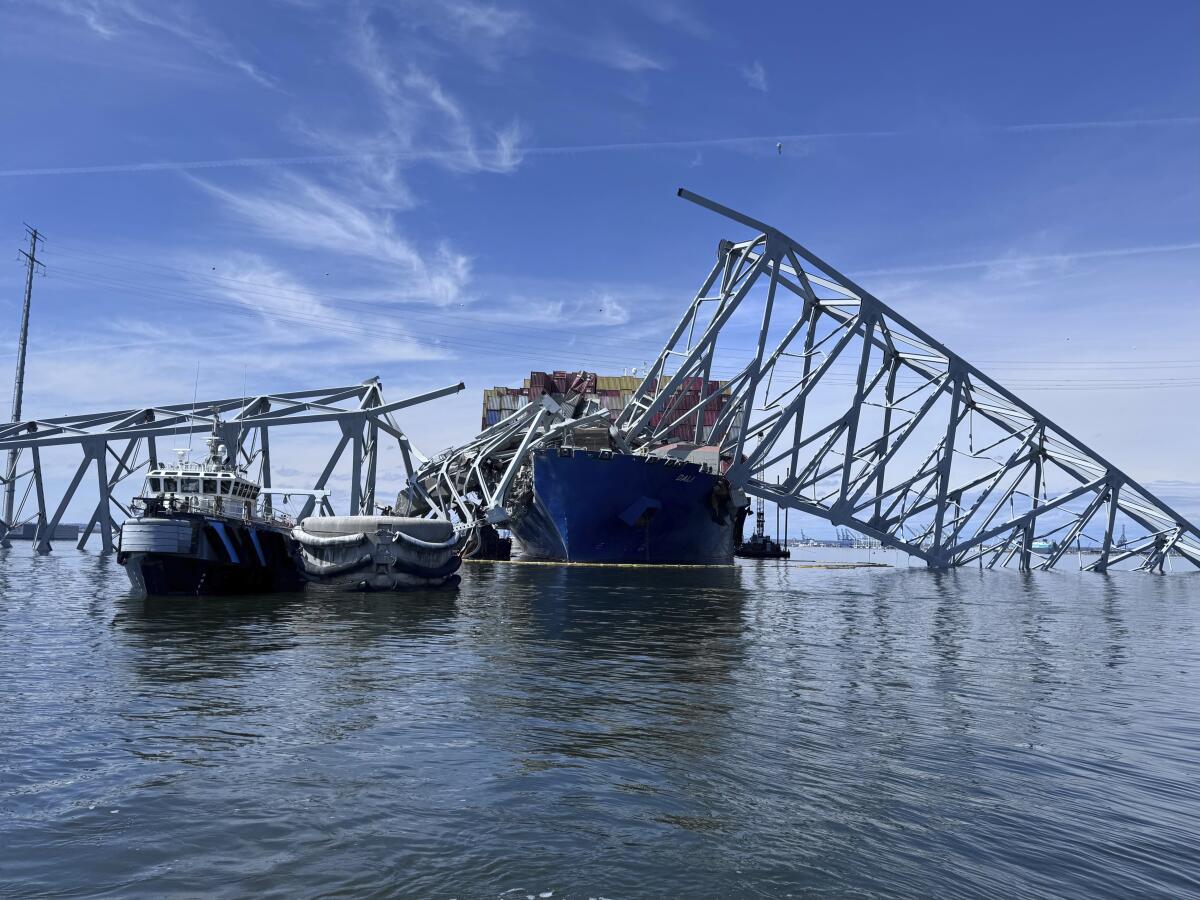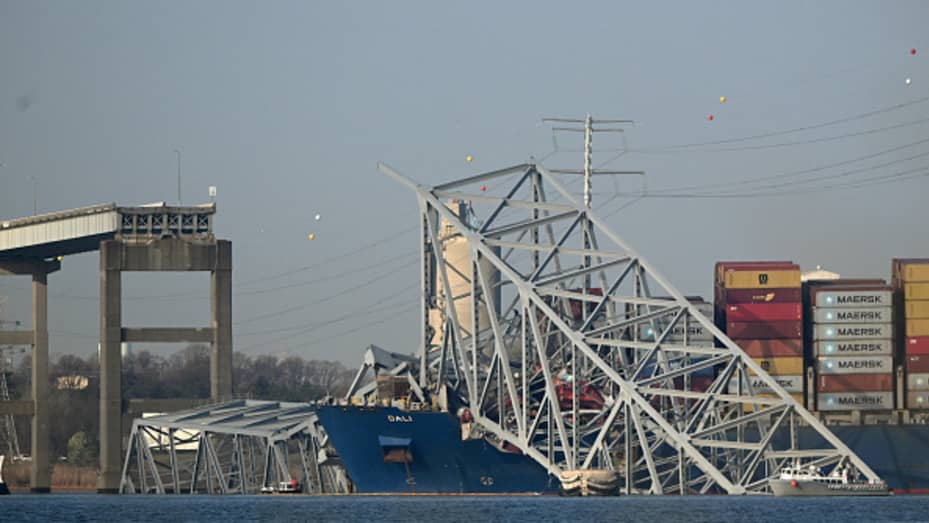The Port of Baltimore grapples with the aftermath of a bridge collapse that obstructed shipping routes. Recovery efforts are underway following the collision of a container ship with the Francis Scott Key Bridge, resulting in fatalities and significant infrastructure damage.
While a temporary channel has been opened, allowing limited ship traffic, the full restoration of commercial shipping remains hindered by daunting conditions.

The primary focus of the recovery operation, led by the U.S. Coast Guard and Maryland state authorities, is to clear the harbor and reopen the port, a vital hub for vehicle imports and exports, as well as farm and construction equipment.
However, the cargo vessel Dali, lodged under debris with thousands of containers and a stranded crew, poses a formidable challenge.
Governor Wes Moore underscores the enormity of the task ahead, emphasizing the scale of the project and the complexities involved in debris removal.
Recovery teams face arduous conditions beneath the water’s surface, with twisted steel obscured by murky waters and tangled girders making the cutting process difficult.
Despite these challenges, limited ship traffic has resumed through a temporary channel on the northbound side of the wreckage, providing some relief.

Additional channels with greater depths are expected to open soon, facilitating increased traffic flow once debris is cleared.
President Biden plans to visit Baltimore to assess the recovery efforts firsthand, highlighting the administration’s commitment to supporting the region’s recovery.
The federal government has already provided resources and funding for the reconstruction of the bridge, underscoring the importance of swift and comprehensive action in the aftermath of the disaster.


















